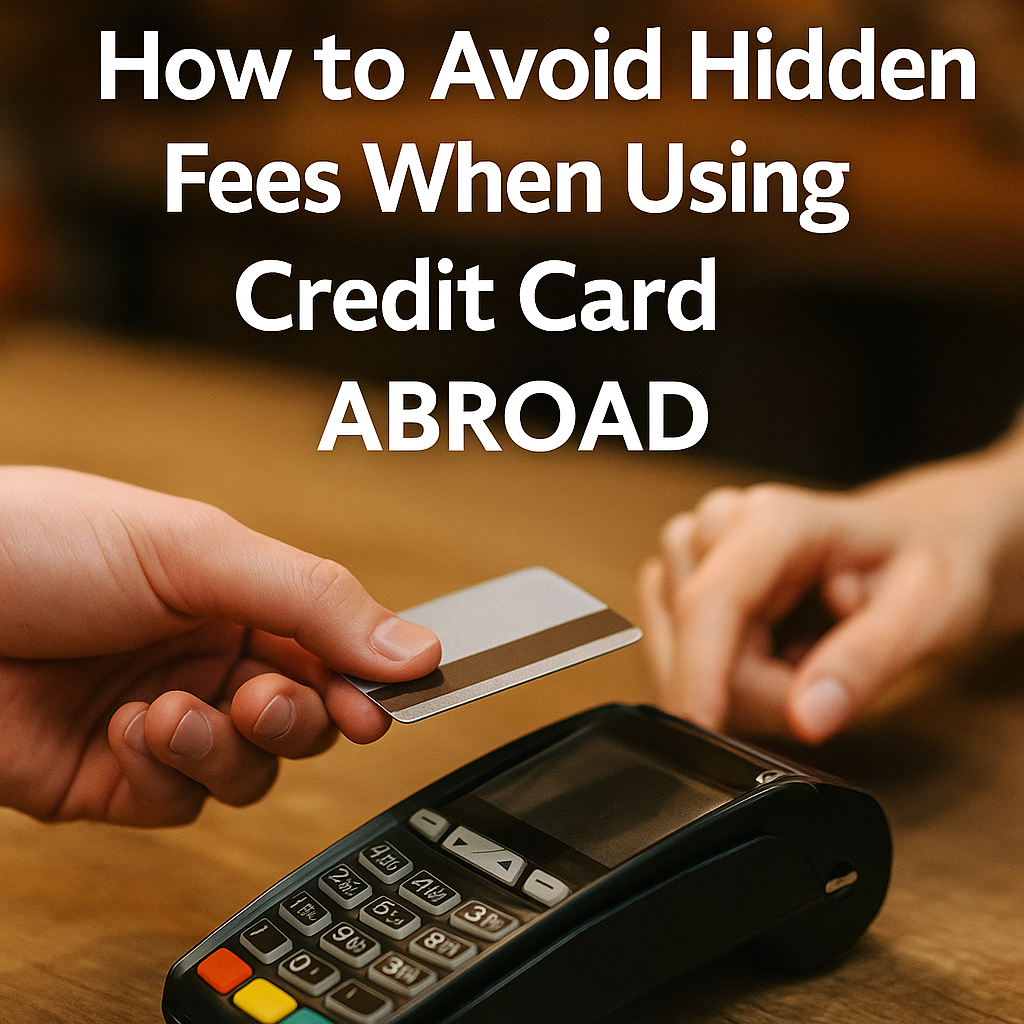Traveling or living abroad offers incredible opportunities—but financial surprises like hidden credit card fees can quickly sour the experience. Whether you’re a short-term traveler, international student, digital nomad, or long-term expat, understanding how international credit card charges work is essential to protect your money and maximize your savings.
This in-depth guide will show you how to avoid hidden charges when using your credit card abroad in 2025.
1. Understand the 3 Types of Foreign Transaction Fees
Most people think there’s just one type of foreign transaction fee—but there are actually three:
a) Foreign Transaction Fee (1–3%)
This is a surcharge that banks add for processing payments in a non-native currency. Most U.S. credit cards charge 2%–3%.
b) Currency Conversion Fee (FX Markup)
This is the hidden part. When your bank or payment processor converts the charge from local currency to your home currency, they apply a rate that includes a hidden markup, often between 1.5%–4%.
c) Dynamic Currency Conversion (DCC)
At shops or ATMs, you may be offered the option to “pay in your home currency.” This is called DCC—and it’s always a trap. The rate is terrible, and you’ll end up paying 6–10% more.
2. Use a No Foreign Transaction Fee Credit Card
If you’re serious about saving, your number one tool should be a fee-free card. Some of the best include:
- Chase Sapphire Preferred / Reserve
- Capital One Venture X
- American Express Gold International
These cards do not charge foreign transaction fees and often offer travel rewards, airport lounge access, and travel insurance.
Pro Tip: Apply for these cards well in advance of your trip, and notify your bank about international use to avoid getting blocked.
3. Always Pay in Local Currency
If a terminal asks:
“Would you like to pay in USD or KRW (or EUR, GBP, etc.)?”
Always choose the local currency.
Why?
- Selecting your home currency activates Dynamic Currency Conversion (DCC)
- DCC is run by third-party processors who apply terrible exchange rates
- You could lose an extra 5–10% on every transaction
4. Avoid ATM Trap Fees
Using foreign ATMs is sometimes necessary, but it comes with risks:
- Foreign ATM surcharge: $3–$7 per withdrawal
- Your bank’s withdrawal fee: another $2–$5
- FX markup on top of that
How to minimize losses:
- Use global ATM fee reimbursement cards (e.g., Charles Schwab, Revolut Metal)
- Withdraw larger amounts less frequently
- Avoid airport ATMs which have the worst rates
5. Use Mobile Wallets Linked to Fee-Free Cards
Apps like Apple Pay, Google Pay, and Samsung Pay often bypass POS machine DCC traps.
Link them to a no-foreign-fee credit card and you’ll enjoy:
- Tap-to-pay convenience
- No PIN needed in many countries
- Instant currency conversion at real-time FX rates
6. Track and Audit Your Charges
Use fintech apps like:
- Revolut – Real-time alerts + spot exchange rates
- Wise (ex-TransferWise) – Transparent conversion fees
- Curve – Consolidate multiple cards + switch payments after the fact
Tip: Check every charge. Even one small DCC mistake can cost you more than $100 during a long trip.
7. Consider Prepaid Travel Cards (with Caution)
While prepaid travel cards can seem convenient, they come with limitations:
Pros:
- Preload foreign currency
- Lock in exchange rates
- Safer than carrying cash
Cons:
- High reloading or inactivity fees
- Limited acceptance in some countries
- Poor customer support when issues arise
Use them only if you’re unable to get a top-tier international credit card.
Final Summary: How to Avoid Foreign Card Fees in 2025
| Tip | Savings Potential | Recommended Tool |
|---|---|---|
| Use fee-free cards | Save 2–3% per transaction | Chase, Capital One, Amex |
| Avoid DCC | Save 5–10% per purchase | Always pay in local currency |
| Reimburse ATM fees | Save $7–10 per withdrawal | Schwab, Revolut |
| Use mobile wallets | Convenience + protection | Apple Pay, Google Pay |
| Audit charges | Detect overcharges | Revolut, Wise |
Why This Matters
Imagine spending $5,000 abroad in a year. With hidden fees of 5%–8%, you could lose $250–$400—for nothing. That’s a flight, a month of rent, or a serious dent in your budget.
Learning to avoid these traps isn’t just smart finance—it’s essential for any global citizen in 2025.
📌 Coming Up Next
Looking for the best credit cards to use in Korea or other countries? Our next post breaks down the top cards for expats — with no annual fees and worldwide acceptance.
